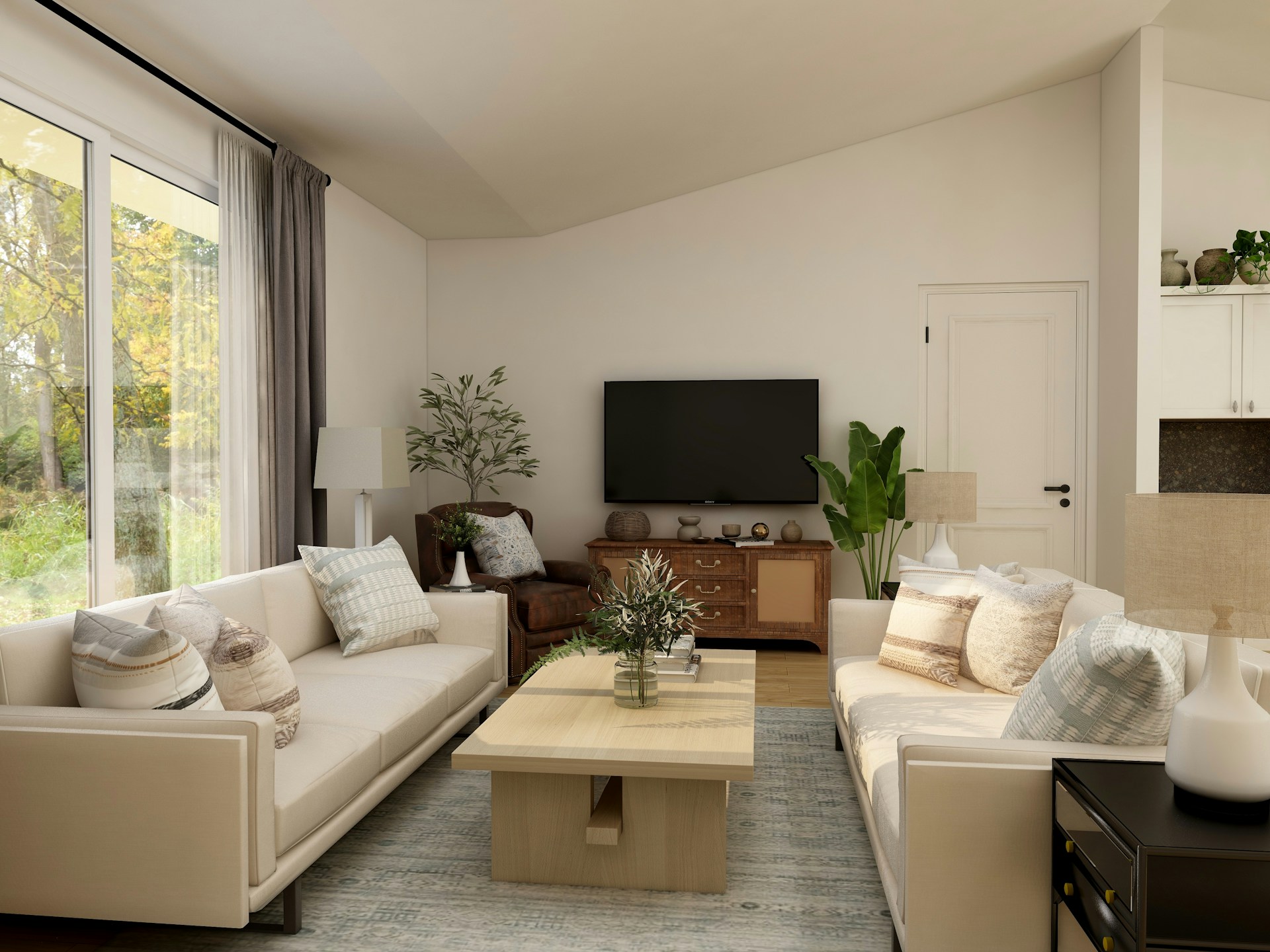How to Choose Wooden Furniture: Tips for Finding the Perfect Fit for Your Home

Key Factors in Choosing Wooden Furniture
When selecting wooden furniture, consider durability, design preferences, and your budget. These factors will help you make a smart choice that fits your home and lifestyle.
Durability and Strength
Durability is crucial when picking wooden furniture. Hardwoods like oak and maple are known for their strength and longevity. They handle everyday use well, making them ideal for busy homes.
- Consider where the furniture will be placed. High-traffic areas benefit from sturdy options.
- Look for furniture that uses traditional joinery techniques. These often indicate better craftsmanship and durability.
Softwoods like pine may be lighter and more affordable, but they can scratch easily. Think about wear and tear to ensure your furniture lasts for years.
Aesthetics and Design Preferences
Your furniture should match your style and home decor. Different woods have unique appearances that can influence the overall look of your space.
- Oak is known for its prominent grain and is often used in traditional designs.
- Cherry offers a rich color that deepens over time, fitting well in both modern and classic settings.
Consider how the wood's color and grain will blend with your current furnishings. Also, think about the finish. A natural or stained look can dramatically change the furniture's appearance.
Budget and Value Considerations
Your budget will play a significant role in your selection. Hardwoods are typically more expensive than softwoods, but they offer better value in the long run due to their durability.
- Set a clear budget before shopping.
- Don't forget to account for potential maintenance costs. High-quality finishes may need reapplication over time.
Shop around and compare prices from different stores. Remember, investing in good furniture can save you money later by reducing the need for replacements.
Understanding Wood Types for Furniture
Choosing the right wood type is essential for the durability and look of your furniture. Different woods serve various purposes and come with their own sets of perks and drawbacks. Here, we will explore hardwoods versus softwoods and the differences between solid wood and engineered wood options.
Differences Between Hardwood and Softwood
Wood can be divided into two main categories: hardwood and softwood.
- Hardwoods come from deciduous trees, which lose their leaves in autumn. Common examples of hardwoods include oak, maple, and cherry. These woods are typically denser and more durable. They are well-suited for furniture that needs to withstand daily use.
- Softwoods, on the other hand, come from coniferous trees that generally have needles and produce cones. Examples include pine, cedar, and fir. Softwoods tend to be lighter, easier to work with, and more affordable. They are often used for items like shelves and casual furniture.
Both types have their place in furniture making. Choose hardwoods for lasting quality and softwoods when budget is a concern or for more casual pieces.
Benefits of Solid Wood Versus Engineered Wood
Solid wood and engineered wood products have different characteristics that can affect your choice.
- Solid wood furniture is made from natural lumber, providing an authentic feel and significant durability. It can be sanded and refinished multiple times, ensuring a long life. Popular types include oak and walnut, which are strong and beautiful.
- Engineered wood, such as plywood and particleboard, is created by binding wood fibers or veneers together. It is typically less expensive and can be more resistant to warping. Plywood often features layers that enhance stability, while particleboard offers a smooth surface for various finishes.
When considering your options, weigh the long-term look and feel of solid wood against the affordability and practicality of engineered wood to find the right fit for your needs.
Top Hardwood Choices for Furniture
When selecting hardwood for your furniture, it's essential to consider the characteristics of each type. Maple, red oak, and cherry wood are popular choices, each offering unique qualities that may fit your preferences and needs.
Maple Wood Characteristics
Maple wood is known for its strength and durability. This hardwood comes in two types: hard maple and soft maple. Hard maple is particularly dense, making it ideal for furniture that needs to withstand heavy usage.
- Color and Grain: Maple has a fine, uniform grain with a light color that can range from cream to light brown. It also takes stain very well, allowing you to achieve various finishes.
- Uses: You'll often find maple in cabinets, tabletops, and dining furniture. Its resilience makes it a favorite for everyday items and pieces that require longevity.
Red Oak Properties
Red oak is a favorite among woodworkers due to its hardiness and beautiful grain. This wood has a distinctive open grain that adds character to any piece it is used in.
- Color and Strength: Red oak typically has a warm reddish-brown hue, which can deepen over time. It's strong enough to carry heavy loads, making it suitable for both furniture and flooring.
- Applications: You will find red oak in everything from traditional cabinets to modern furniture designs. It's particularly popular for furniture that is used frequently, like dining tables and chairs.
Cherry Wood Qualities
Cherry wood is highly valued for its rich, warm tones and smooth texture. Over time, it deepens in color, transitioning from a light pinkish hue to a darker, rich brown.
- Finishing and Aging: The natural luster of cherry wood gives furniture a sophisticated look. It also finishes beautifully, enhancing the grain and warmth of the wood.
- Uses: Cherry is often used in fine furniture, cabinetry, and even musical instruments. Its elegant appearance makes it a sought-after choice for pieces meant to impress.
Whether you're looking for durability, beauty, or unique character, understanding these hardwood options can help you make an informed decision.
Pros and Cons of Engineered Wood
Engineered wood can be a practical option for furniture due to its durability and cost-effectiveness. Understanding its types, like plywood and particleboard, will help you make an informed choice for your home.
Plywood Features
Plywood is made from thin layers of wood veneer glued together. This construction gives it several advantages. It's strong and resistant to warping, making it suitable for various furniture pieces.
Key Benefits of Plywood:
- Durability: Plywood is less likely to crack or split compared to solid wood.
- Moisture Resistance: It can withstand moisture better, making it ideal for kitchens and bathrooms.
- Versatility: You can use plywood for shelves, cabinets, and even decorative items.
While plywood is a great option, keep in mind that the quality can vary. High-quality plywood will last longer and look better than cheaper options.
Particleboard Uses and Limitations
Particleboard, made from wood particles and adhesives, is often seen in budget-friendly furniture. It is lightweight and easy to manufacture. However, it has some notable drawbacks.
Common Uses:
- Affordable Furniture: Particleboard is often used in desks, bookcases, and flat-pack furniture.
- Smooth Surface: It can be easily laminated for a clean finish.
Limitations:
- Lower Durability: It may not last as long as plywood or solid wood.
- Water Sensitivity: Moisture can damage particleboard, leading to warping or disintegration.
- Repair Difficulty: Once damaged, repairs can be challenging, often requiring replacement.
Choosing the right type of engineered wood depends on your specific needs and budget.
Evaluating Quality and Craftsmanship
When choosing wooden furniture, pay close attention to its construction and finish. These factors greatly affect the durability and appearance of the piece. Here's what to look for.
Inspecting Joinery and Construction
The joinery of furniture is crucial for strength and stability. Look for methods such as:
- Dovetail joints: These are strong and often used in drawers.
- Mortise-and-tenon joints: Common in tables and chairs for added durability.
- Dowels: These can be reliable if done correctly.
Examine how the parts fit together. Tight joints without gaps are a sign of quality. If you notice loose fittings, that can lead to problems later.
You should also check the weight of the furniture. Generally, solid wood pieces weigh more and signal sturdiness. Avoid items made from particleboard or MDF, as they tend to be less durable.
Finish and Surface Treatments
Finish is more than just looks—it's about protection. Here's what to evaluate:
- Smoothness: A well-finished surface feels smooth to the touch. This indicates careful craftsmanship.
- Stain consistency: Look for a uniform color with no blotches.
- Sealing: Good finishes will protect against moisture and scratches.
Assessing the edges is important too. High-quality pieces have rounded or beveled edges that make them comfortable and visually appealing.
Don't overlook the scent; quality finishes often smell pleasant, while cheap options might not. Always inspect the piece from different angles to spot any imperfections. This step ensures you get a beautiful and durable addition to your home.
Matching Wooden Furniture to Your Space
Choosing the right wooden furniture for your space involves understanding how different styles and sizes fit into your home. You need to consider how the furniture complements your existing decor and the functionality required for each room.
Choosing Styles that Complement Your Decor
Start by identifying the style of your home. Do you have a modern, rustic, or traditional design? Matching wooden furniture with your decor style is essential for a cohesive look.
- Modern Spaces: Look for sleek lines and minimalistic designs in woods like oak or walnut.
- Rustic Decor: Consider reclaimed wood furniture with natural finishes for a cozy feel.
- Traditional Settings: Opt for classic styles, such as mahogany or cherry, that fit your aesthetic.
Mixing different wood tones can also add interest. Aim for a unifying element, like a common finish or color, to tie everything together. Remember, balance is key!

Considering Room Size and Function
The size of your room significantly impacts the type of wooden furniture you choose. In smaller spaces, opt for lightweight and multi-functional pieces that make the most of your area. For instance:
- Small Rooms: Consider a compact coffee table or a storage ottoman that doubles as seating.
- Large Rooms: You can go for larger statement pieces like a sturdy dining table or an expansive bookshelf.
Function is equally important. Think about how you will use your space. If you entertain often, larger, more durable pieces may be needed. For quieter areas, choose comfortable, inviting furniture to enhance relaxation.
Published 8/4/25